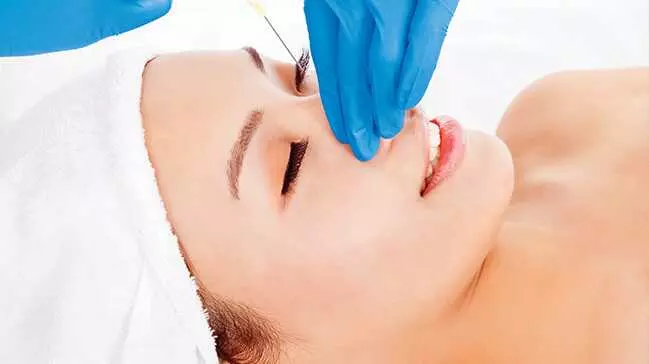The landscape of cosmetic surgery in the UAE is continually evolving, with Rhinoplasty Surgery in UAE (جراحة تجميل الأنف في الإمارات العربية المتحدة), often known as a nose job, standing out as one of the most sought-after procedures. This is largely due to the region’s diverse population and a growing appreciation for both aesthetic refinement and functional improvement. The modern approach to rhinoplasty in the UAE is characterized by a spectrum of desired outcomes, ranging from delicate, imperceptible enhancements to more significant and transformative changes, all while prioritizing natural harmony and structural integrity.
The Shift Towards Natural Aesthetics
In recent years, there has been a pronounced shift in the UAE towards a more natural and understated aesthetic in rhinoplasty. Patients are increasingly seeking results that enhance their features without appearing “done” or artificial. This trend is driven by a desire for improved facial balance that complements their unique ethnic characteristics rather than erasing them. The emphasis is on subtle refinements that create a more harmonious profile and frontal view, often addressing minor irregularities or imbalances. This nuanced approach focuses on preserving the natural contours of the nose while making precise adjustments to achieve a refined yet authentic look.
For those pursuing subtle changes, the techniques employed often involve minimal reshaping of cartilage and bone. The aim is to create a nose that blends seamlessly with the rest of the face, enhancing overall beauty without drawing undue attention to the nose itself. This can involve reducing a slight dorsal hump, refining the nasal tip to make it less bulbous or droopy, or subtly narrowing the bridge. The goal is to achieve an outcome that looks as if the patient was simply born with a more ideal nose for their face.
Embracing Individuality and Ethnic Preservation
A significant aspect of the current trends in rhinoplasty within the UAE is the strong emphasis on ethnic preservation. With a multicultural population, there’s a growing understanding and appreciation for diverse nasal anatomies and aesthetic preferences. Patients of various backgrounds, including those of Middle Eastern, Asian, and African descent, are increasingly opting for rhinoplasty procedures that refine their noses while respecting and maintaining their unique ethnic features. This means avoiding a “one-size-fits-all” approach and instead tailoring the procedure to the individual’s specific facial structure and cultural identity.
Surgeons in the UAE are adept at performing sophisticated techniques that cater to these diverse needs. For example, some patients may desire to refine a broader nasal bridge or modify the shape of the nostrils without completely altering the characteristic features of their heritage. This approach celebrates individuality, allowing patients to enhance their appearance while staying true to their roots. It’s about achieving a refined version of their natural nose, rather than conforming to a universal beauty standard.
Advances in Surgical Techniques
The evolution of rhinoplasty in the UAE is also marked by advancements in surgical techniques, offering greater precision and predictability. Modern approaches are less invasive and more focused on preserving the existing nasal structures as much as possible.
One notable technique gaining traction is preservation rhinoplasty. This approach focuses on reshaping the nose by preserving the dorsal structures, rather than removing them. This can lead to less disruption of the natural anatomy, potentially resulting in quicker recovery times and a more natural-looking outcome. It’s often favored for addressing dorsal humps by pushing down or reshaping the existing bone and cartilage, rather than excising it.
Another innovation is the increasing use of ultrasonic rhinoplasty, also known as piezosurgery. This technology utilizes ultrasonic vibrations to precisely sculpt nasal bones with minimal trauma to surrounding soft tissues. This can lead to reduced bruising and swelling post-surgery, offering a more comfortable recovery for patients. The precision offered by ultrasonic tools allows for very refined adjustments, contributing to the natural results many patients seek.
For cases requiring more significant structural changes, structural rhinoplasty remains a fundamental approach. This technique involves carefully reshaping and supporting the nasal framework using cartilage grafts, often taken from the patient’s own septum or ear. This provides long-term stability and allows for more dramatic alterations while ensuring the nose maintains its form and function. Many modern approaches might even incorporate elements of both preservation and structural techniques, often referred to as a hybrid approach, to achieve the optimal balance between natural aesthetics and necessary structural modifications.
The Desire for Dramatic Transformation
While subtle enhancements are popular, there remains a demand for more dramatic transformations, particularly for individuals with significant nasal concerns or those seeking a more pronounced change in their facial profile. This can include correcting pronounced dorsal humps, significantly narrowing a very wide nose, altering a markedly deviated septum that affects both aesthetics and breathing, or reshaping a severely asymmetrical nose.
For these more significant changes, the surgeon’s artistry and technical expertise become even more critical. The aim is to achieve a dramatic improvement that is still aesthetically pleasing and in harmony with the patient’s overall facial features. This often involves a more extensive reshaping of the nasal bones and cartilage. Despite the extent of the change, the focus remains on creating a nose that looks balanced and natural within the context of the individual’s face, avoiding an “operated” appearance. The discussion with the patient prior to surgery is crucial to establish realistic expectations and ensure the desired level of transformation aligns with what is surgically achievable and aesthetically appropriate.
The Role of Advanced Planning and Patient Collaboration
In the UAE, advanced imaging technologies play a vital role in modern rhinoplasty. Three-dimensional imaging and morphing software allow patients to visualize potential outcomes during the consultation phase. This collaborative process enables patients to actively participate in the planning of their surgery, ensuring their aesthetic goals are clearly understood and aligned with realistic surgical possibilities. This interactive approach helps manage expectations and contributes to higher patient satisfaction.
The comprehensive consultation also involves a thorough assessment of the patient’s nasal anatomy, skin quality, and overall facial proportions. Consideration is given not only to the aesthetic aspects but also to maintaining or improving nasal breathing function. The balance between achieving desired cosmetic results and ensuring optimal breathing is a fundamental principle of modern rhinoplasty.
Recovery and Long-Term Results
Regardless of whether the desired outcome is subtle or dramatic, the recovery process is an important part of the rhinoplasty journey. While initial swelling and bruising are common, these typically subside significantly within the first few weeks. The final results of rhinoplasty can take several months to fully mature as residual swelling resolves and tissues settle. Patience is key, as the subtle refinements often continue to improve over a year. The long-term success of rhinoplasty in the UAE is attributed to the skilled hands of experienced professionals who prioritize meticulous technique and comprehensive post-operative care, aiming for lasting and satisfying results.
FAQs on Rhinoplasty Trends in the UAE
What is the primary focus of modern rhinoplasty in the UAE?
The primary focus is on achieving natural-looking results that enhance facial harmony while often preserving ethnic identity. There’s a strong emphasis on personalized outcomes rather than a generic “perfect nose.”
Can rhinoplasty address both cosmetic and functional concerns?
Yes, modern rhinoplasty in the UAE frequently addresses both aesthetic concerns, such as reshaping the nose for improved appearance, and functional issues, such as correcting breathing difficulties caused by structural problems within the nose.
What are some of the advanced techniques used in rhinoplasty?
Some advanced techniques include preservation rhinoplasty, which focuses on maintaining original nasal structures, and ultrasonic rhinoplasty, which uses precise ultrasonic vibrations for bone sculpting with reduced trauma. Hybrid approaches combining various techniques are also common.
Is it possible to see potential results before surgery?
Yes, advanced imaging software is commonly used during consultations to provide patients with a visual representation of potential surgical outcomes, allowing for collaborative planning and realistic expectation setting.
How long does it take to see the final results of rhinoplasty?
While initial swelling and bruising typically subside within a few weeks, the final results of rhinoplasty can take several months, sometimes up to a year or more, to fully mature as all swelling resolves and the tissues settle into their new shape.









